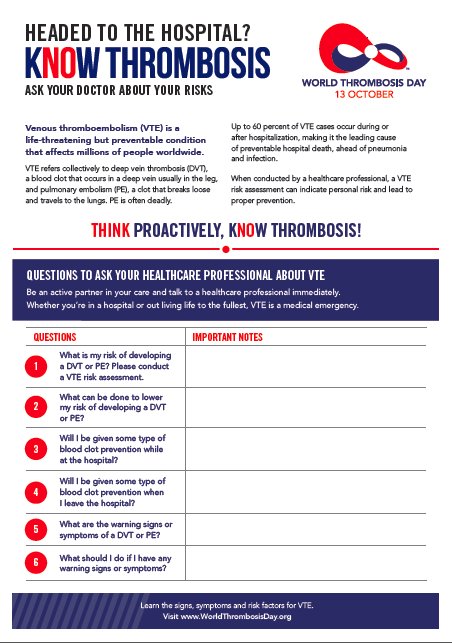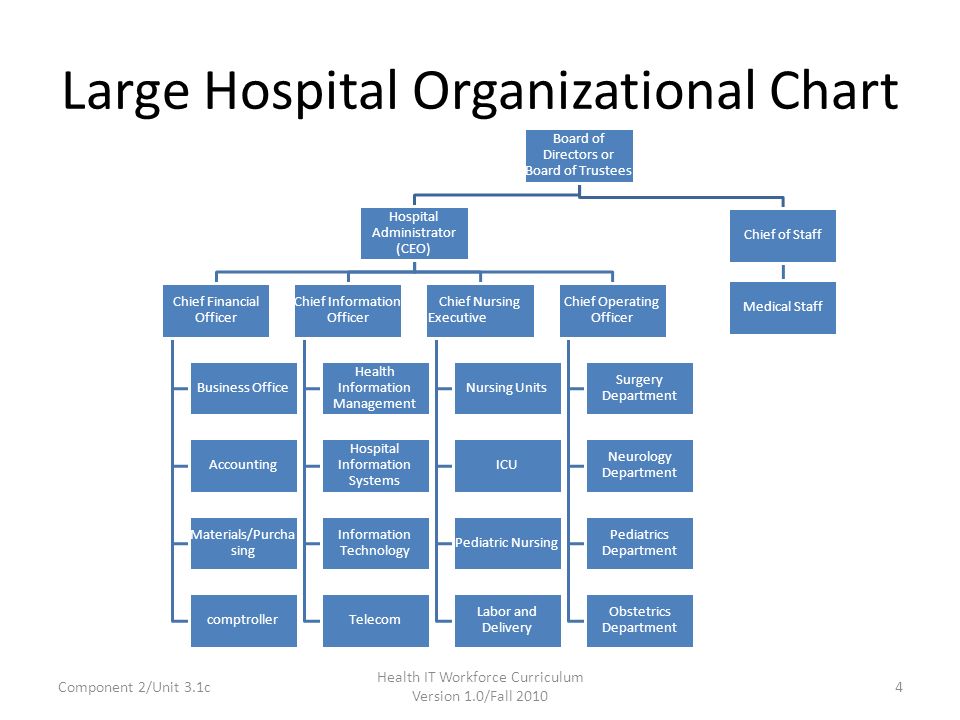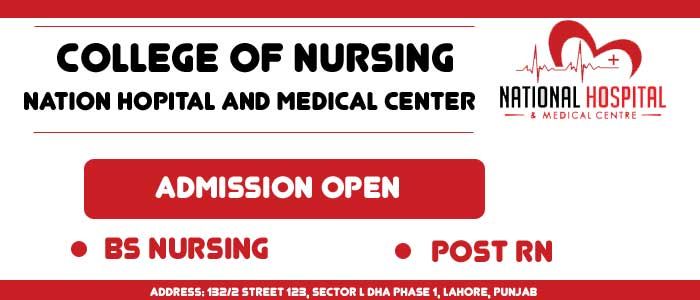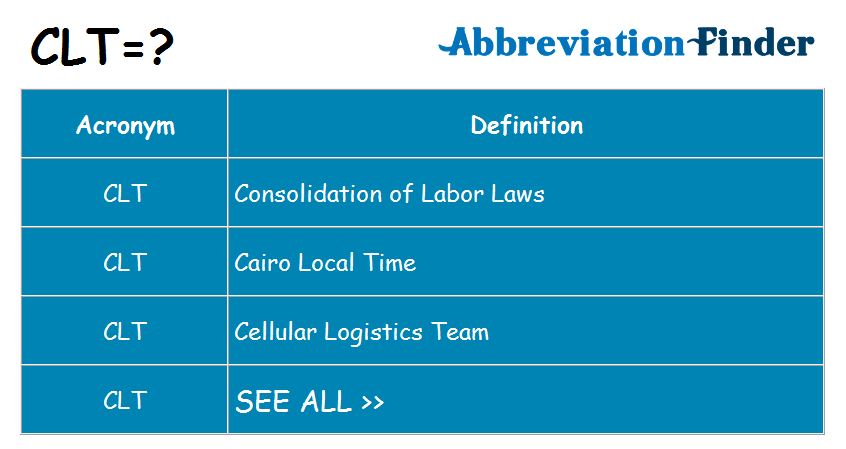What is hospital admission. Understanding Hospital Admission: The Difference Between Inpatient and Observation Status, and Its Impact on Medicare Coverage
What is the difference between being admitted to the hospital and being under observation? How does this impact Medicare coverage and out-of-pocket costs? Get answers to these important questions.
The Distinction Between Admitted and Observation Status
When a patient is hospitalized, it is crucial to understand the difference between being “admitted” and being “under observation.” The admitted status means the patient is formally admitted to the hospital under the care of a doctor, while the observation status indicates the patient is staying in the hospital but as an outpatient.
The distinction between these two statuses can have significant implications for the patient’s insurance coverage and out-of-pocket costs. For example, if a patient is under observation for more than 24 hours, they may incur higher copays. Additionally, Medicare coverage for post-discharge skilled nursing facility (SNF) rehabilitation is directly tied to the patient’s prior hospital stay status.

The Impact on Medicare Coverage
Medicare coverage is affected by the patient’s hospital stay status. If the patient is formally admitted, Medicare will cover the hospital stay and any post-discharge skilled nursing care, as long as the patient was in the hospital for at least three days as an admitted inpatient. However, if the patient was only under observation, even if they spent multiple nights in the hospital, they may not qualify for Medicare coverage of skilled nursing care after discharge.
This can be a significant financial burden for patients and their families, as skilled nursing care can be extremely expensive. It is crucial to understand the patient’s status and advocate for them to be formally admitted if it is likely they will need post-discharge rehabilitation.
Navigating the Hospital Admission Process
Hospitals are required to inform patients of their admission status, but this information can sometimes fall through the cracks or be misunderstood. It is important for patients and their families to be proactive in asking about the patient’s status and understanding the implications.

Hospitals often have staff, such as social workers, who can help patients and their families navigate the billing and terminology related to hospital stays. Additionally, organizations like Oasis Senior Advisors can provide free consultations to help demystify these complex issues.
Automating Criteria for Hospital Admission
One of the challenges in the hospital admission process is that emergency department clinicians, who perform the initial assessment of patients, are not always well-versed in the specific criteria for inpatient versus observation status. They may be focused on the medical needs that require hospitalization, but not the nuances of the admission process.
To address this, some hospitals are exploring ways to automate the criteria for hospital admission, ensuring that patients are properly categorized and their insurance coverage is accurately reflected. This can help avoid surprises and financial burdens for patients and their families.
The Importance of Understanding Hospital Admission
Navigating the hospital admission process can be daunting, but understanding the difference between inpatient and observation status, as well as the implications for Medicare coverage and out-of-pocket costs, is crucial. By being proactive and seeking support from hospital staff and organizations like Oasis Senior Advisors, patients and their families can make informed decisions and avoid unexpected financial obstacles during a challenging time.

Seeking Assistance and Resources
If you or a loved one is facing a hospital stay, don’t hesitate to reach out for help. Hospitals often have staff, such as social workers, who can provide guidance on the admission process and insurance coverage. Additionally, organizations like Oasis Senior Advisors offer free consultations to assist with understanding these complex issues.
By being informed and proactive, you can ensure that your loved one receives the care they need while minimizing the financial burden. Remember, you don’t have to navigate this process alone. Don’t hesitate to seek the support and resources available to you.
The Difference between Admitted and Observation
When your parent is in the hospital for any reason, it is stressful and worrying. It doesn’t make it any easier when you are also unsure of how their hospital stay affects their out-of-pocket medical costs, what is covered by Medicare, and how to navigate the systems that can explain all that. But you can get peace of mind by understanding some of the terminology. Perhaps most important is understanding the difference between ‘observation’ and ‘admitted’.
One way to get support in this discovery process is to call Oasis Senior Advisors to speak to someone who can explain some of the fundamentals. Don’t hesitate to reach out for a free consultation. Use our online form or dial 475.619.4123 or 914.356.1901 today
Hospital Status—Admitted or Under Observation?
Because it makes a difference if your parent is admitted or only under observation, hospitals are required to let you know what the status is, and they usually do. Sometimes, though, information can fall between the cracks, or you may not really understand what the status means about your parent’s insurance. This is the worst time to be under additional stress from financial worry or confusion.
Sometimes, though, information can fall between the cracks, or you may not really understand what the status means about your parent’s insurance. This is the worst time to be under additional stress from financial worry or confusion.
For example, did you know that if your mom or dad is under observation—meaning not formally admitted to the hospital—for more than 24 hours, there is a potential that big copays may accrue? Medicare payments for post-discharge nursing home rehab stays are also affected by the status of the prior hospital stay status.
As the terms imply, “admitted” means the patient is in the hospital under the care of a doctor, and “under observation” means the patient is staying in the hospital but as an outpatient. Even though they spend the night, no admissions papers have been signed making them an admitted inpatient in the hospital. In effect, they are in the Emergency Room even if they may not be in the ER itself.
Procedures can be done while under observation, so the fact that your parent receives an MRI or a biopsy does not confirm anything one way or the other about admissions status.
Relationship between Admissions Status and Medicare Coverage
Both the time spent in the hospital and any post-hospital care are covered by Medicare at higher amounts if the patient is admitted. Any time in the emergency department prior to admission and the day of discharge is considered outpatient and is billed at a higher rate.
Out-of-pocket charges are significantly higher when your parent is under observation or awaiting admission.
Rehab in a Skilled Nursing Facility—Is It Covered?
The answer to this question is sometimes yes, sometimes no, otherwise known as: it depends.
Medicare will cover post-discharge skilled rehab if your parent has a “qualifying hospital stay,” which means he or she:
- Was admitted to the hospital as an inpatient
- Was in the hospital for three days or more with that inpatient status
If your parent:
- Was in the hospital for more than three days but was admitted as an inpatient for fewer than three days
- Had the status of “under observation” for the entire time or enough that there were not three days of admitted status
…there is no qualifying hospital stay, and skilled nursing care will not be covered.
This is not something you want to be surprised with only after the bills come. It’s something you want to be aware of at the moment and advocate for if a post-discharge rehab stay seems likely or needed.
Find Out More with Oasis Senior Advisors
It’s important to understand Medicare coverage of hospital stays, each related service during your loved one’s stay, and post-hospital skilled nursing care. Depending on inpatient or observation status, your parent may have to pay deductibles or a copay for each service. Medication coverage may be affected too. Knowing the facts ahead of time can save your loved one money and both of you a lot of undue stress. You do not have to figure all of this out by yourself. Hospitals often have staff who help people just like you understand the billing, the terminology, and expectations. Seek out the business department and the social worker for clarification. You can also have Oasis Senior Advisors help you. We can demystify these two different but related kinds of hospital stay and how that difference can affect your bottom line. Reach out by using our online form or just give us a call at 475.619.4123 or 914.356.1901.
Reach out by using our online form or just give us a call at 475.619.4123 or 914.356.1901.
Automate Criteria for Hospital Admission
ED clinicians, who do the initial assessment of patients for admission, are not taught in school the differences in emergency admission criteria such as, Outpatient/Observation status versus Inpatient status. They enter the workforce well-versed in what medically requires a hospital stay, but not necessarily the criteria for hospital admission.
It is the admitting physician who is ultimately responsible to determine the most appropriate status. He/she must also write the best, specific story on why he/she feels the patient needs to “buy a bed.” Unfortunately, when a patient is too sick to be sent home, the documentation of ‘how sick the patient is’ is important for the insurance company to approve the services given to the patient.
A healthcare insurance company has specific guidelines (MCG or InterQual) or proprietary standards for when to provide financial coverage for medically appropriate services. This is why it’s important to understand that an admission status is closely related to the acuity of the patient and is important when caring for a patient.
This is why it’s important to understand that an admission status is closely related to the acuity of the patient and is important when caring for a patient.
Through the years, hospitals have had to find ways to make sure patients are billed in their correct status to prevent billing patients incorrectly and prevent insurance denials. By developing a utilization management department staffed by nurses, hospitals have a way to evaluate medical necessity of healthcare services to determine which status is most appropriate for the patient. The issue is that nurses may not have the entire story related to the reason for admission and documentation does not support the acuity of service and therefore must contact the admitting provider to relay that information.
Having to determine if an insurance company will provide coverage, once the decision is made to admit a patient, requires understanding of these insurance guidelines or standards which is beyond what physicians are taught in their medical training. If a patient is placed in the wrong status, insurance companies can deny payment which means a hospital will not be reimbursed on the care given to the patient. This is a financial loss to the hospital and can potentially negatively impact the patient.
If a patient is placed in the wrong status, insurance companies can deny payment which means a hospital will not be reimbursed on the care given to the patient. This is a financial loss to the hospital and can potentially negatively impact the patient.
Hospital administrators manage facility finances and budgets to ensure their hospital remains fiscally sound and must comply with federal laws and regulations. Denied payments can put a hospital in a financially debilitating position and must rely on physician and UR teams to get the admission process right. Just like we all manage a budget at home or at work, hospital operators and clinicians must work together to keep hospitals in business.
If you want to know more about the criteria for hospital admission and the hospital admissions process, continue reading about why hospital admissions can be so complex, slow, and problematic and solutions to make it simpler.
Hospital Admission Documentation Requirements
While ED doctors are trained to provide care to patients, they also need to understand the administrative process of patient admissions. One key aspect of this is for doctors to be well-versed in hospital admission documentation requirements for patients with commercial insurance as well as Medicare and Medicaid — insurance coverage provided by the Centers for Medicare and Medicaid (CMS).
One key aspect of this is for doctors to be well-versed in hospital admission documentation requirements for patients with commercial insurance as well as Medicare and Medicaid — insurance coverage provided by the Centers for Medicare and Medicaid (CMS).
CMS provides health coverage to more than 100 million people throughout the United States. Many people who come to the ED have this publicly provided insurance. Because so many patients have CMS insurance, doctors are subjected to understanding the Medicare two midnight rule. This is what often guides their decision-making process when deciding to admit a patient or not: they must carefully assess whether the patient meets CMS’ criteria for admission of staying over 2 midnights to meet the acuity of inpatient status or if they need a brief, outpatient evaluation in observation services until they’re ready to go home.
The CMS two-midnight rule argues that patients should simply stay in observation unless the care they require will need to go on for two days or longer. What is crucial to this rule is that the documentation must show the acuity and support the patient requiring inpatient services.
What is crucial to this rule is that the documentation must show the acuity and support the patient requiring inpatient services.
Keeping a patient in a hospital bed for this time frame awaiting placement, further testing, or for patient convenience is not appropriate. This is CMS’ way of lowering unnecessary hospital admissions. CMS originally created this rule of how to avoid observation status due to patient complaints of staying in observation status too long, which caused financial hardship and not qualifying for a skilled nursing facility stay.
Inpatient Vs Observation Criteria
If a physician or admitting practitioner certifies that the patient will be in the hospital for at least two midnights, they are asking for pre-approval of payment from CMS for inpatient services. While intended to be a decision based only on an assessment of the patient’s medical needs, it also depends on additional non-clinical factors like expected length of stay and the specificity of documentation supporting the hospital inpatient claim. Observation services are for patients who cannot be sent home from the ED and are not sick enough for inpatient status or who need short term (less than 2 midnights) evaluation of their symptoms.
Observation services are for patients who cannot be sent home from the ED and are not sick enough for inpatient status or who need short term (less than 2 midnights) evaluation of their symptoms.
Utilization Review teams generally familiarize themselves with the patient guidelines for inpatient vs observation provided by MCG or Interqual, as well as the two-midnight rule that Medicare provides. The UR team can support patient status decisions, typically retrospectively, but physicians and admitting practitioners are ultimately responsible for this decision.
It is important to get this decision correct concurrently, and if the practitioner gets it right from the start, it eliminates issues in the future of having to defend yourself for your decisions.
Observation vs. inpatient reimbursements or payments to the hospital for services given differ significantly, so CMS wants hospitals to be sure that a patient really requires a hospital stay out of true medical necessity. The two-midnight rule is a tool that can help guide a doctors’ decisions regarding inpatient care (IP) vs observation (OBS) when admitting a patient from the ER, especially when the decision regarding admission vs. observation is not so clear-cut. But again, 2 MNs alone is not enough to ensure that care will be covered as ‘medical necessity’ or the ‘severity of the patient disease or symptoms’ require inpatient care.
The two-midnight rule is a tool that can help guide a doctors’ decisions regarding inpatient care (IP) vs observation (OBS) when admitting a patient from the ER, especially when the decision regarding admission vs. observation is not so clear-cut. But again, 2 MNs alone is not enough to ensure that care will be covered as ‘medical necessity’ or the ‘severity of the patient disease or symptoms’ require inpatient care.
On the physician billing side, the same Evaluation & Management (E&M) code will be used for observation or inpatient, but the place of service code must be correct. Starting in 2023 there will be initial admit E&M codes which different by decision making (low, moderate, or high). Subsequent day E&M codes also are based on low or high complexity only. The place of service code is either outpatient (observation) or inpatient.
Types Of Hospital Admission Criteria
There are a few different types of hospital admission criteria that physicians can use when it comes to making decisions about hospital admissions – observation admission criteria and inpatient admission criteria – essentially, whether patients should have outpatient/observation services or whether they qualify for admission to the hospital for, more acute services.
When it comes to the process of creating concrete guidelines for inpatient or observation criteria, there are two companies that have led the way: MCG criteria for hospital admission and InterQual criteria for hospital admission. They have both come up with evidence-based set of guidelines that physicians can use for gauging the most accurate patient status based on the patient’s acuity.
Today, EvidenceCare uses one of the types of hospital admission criteria, MCG criteria. Our AdmissionCare software is integrated into the physicians admission workflow in their EHR, so doctors can rely on a digital resource to evaluate a patient’s condition and automatically let doctors know whether a patient qualifies for admission or not. Interqual has created equally rigorous and useful guidelines for emergency departments and hospitals to make their own independent decisions about which of the two types of hospital admission criteria guidelines they are going to use in their emergency rooms to guide patient admission decisions.
There are several benefits to using evidence-based guidelines for hospital admissions decisions. First, it removes the guesswork for doctors who need to decide on the spot, whether patients should be admitted to the hospital as ‘inpatient’ or to ‘observation’ level of care. When they can refer to a set of criteria, doctors can simply compare patient’s medical condition to a well-respected, trusted resource and have an answer in seconds on the correct patient status, along with specific documentation to support that level of care.
For physicians, hospital administrators and utilization review teams, admission criteria software also ensures correct medical necessity documentation for insurance – saving a lot of time and effort during the patient’s stay by preventing back and forth with UR teams and peer to peer reviews with insurance companies. Nobody likes to have their decision questioned, but you must rely on your documentation to defend yourself.
Examples of Inpatient vs Observation Status
It can be hard to understand what constitutes the conditions required for inpatient hospital admission versus an observation stay. Hearing a few real-life examples of inpatient vs. observation status stories can help you better understand under what conditions doctors would admit patients—and under what circumstances doctors would place a patient in observation.
Hearing a few real-life examples of inpatient vs. observation status stories can help you better understand under what conditions doctors would admit patients—and under what circumstances doctors would place a patient in observation.
One health condition to consider when it comes to hospital admission criteria is heart failure. Heart failure is an acute health condition, but it does not always qualify a patient for inpatient admission. When a patient experiences ‘heart failure’, they can be placed in observation status to see if the treatment plan will alleviate the patient’s symptoms in a short period of time and be discharged home safely. However, if a patient does not improve with the treatment plan and requires a longer more intense treatment plan, inpatient care would be more appropriate.
For example, if the patient has pulmonary edema, requires nasal cannula to increase oxygen saturation, and Lasix, this patient could be treated in observation versus a more acutely ill patient who required more invasive ventilation and specialized acute care treatment.
It will all come down to what is documented as the acuity of the patient and treatment needed to stabilize the patient.
By having a tool like AdmissionCare to assist with these determinations, physicians and admitting practitioners can make quick, precise decisions about the best course of care for their patients.
Hospital Admission Software
One way to make the process of hospital admissions more accurate, faster, and less stressful is by using admission criteria software. A bed status decision software like AdmissionCare reduces the burden of administrative work on doctors and allows them to do what they do best—care for patients’ health.
Giving doctors a medical necessity documentation software like AdmissionCare empowers physicians at the point of care, and its ease of use reduces the amount of work required for everyone involved—no heavy tech training necessary. If your hospital or health system decides to start using AdmissionCare, you can benefit from perks like:
- Speeding up the patient handoff process
- Determining bed status without rigorous training
- Reducing administrative workload for physicians
- UR/Insurance will not interrupt physicians
- Satisfaction that your status is correct, you have documentation to support it, and you ultimately made the best decision
To learn more about the best inpatient vs outpatient software available watch this video about AdmissionCare and how it can improve your hospital admission process. You can also schedule a demo if you’d like to see what it’d be like to use AdmissionCare with your EHR.
You can also schedule a demo if you’d like to see what it’d be like to use AdmissionCare with your EHR.
Hospitalization
TERMS AND CONDITIONS ROUTINE AND EMERGENCY HOSPITALIZATION OF SICK CHILDREN
1. Hospitalization of children under the age of 17 inclusive in the round-the-clock hospital of the GBUZ MODKTOB is carried out on a planned and emergency basis. Foreign citizens are hospitalized on a paid basis, receiving free medical care is carried out in an emergency form in case of sudden acute diseases and conditions that pose a threat to life.
2. Patients are scheduled for hospitalization by the hospital commission.
3. The referral to the hospital commission is carried out by the attending physicians of the consultative and diagnostic polyclinic of the GBUZ MODKTOB after examination and examination in accordance with clinical indications requiring a hospital regimen with active medical care and round-the-clock supervision.
4. The date and time of hospitalization is determined by the head of the department to which the patient is referred.
5. A prerequisite for planned hospitalization is the availability of a valid CHI policy or an agreement for the provision of paid services, VHI.
6. Before planned hospitalization, the patient undergoes a pre-hospital medical examination in the prescribed amount.
7. In the absence of any prescribed analysis or examination during hospitalization, indicated by the doctor in the direction for hospitalization according to the list required for hospitalization, the patient may be additionally examined on a paid basis.
8 . Patients are referred for emergency hospitalization after examination by a traumatologist-orthopedist of the consultative and diagnostic polyclinic of the GBUZ MODKTOB or by an orthopedic traumatologist on duty in the admissions department (on weekends and in the evening and at night) according to directions from the health facility or upon self-appeal. Indications for emergency hospitalization:
Indications for emergency hospitalization:
– acute diseases of the musculoskeletal system and conditions that threaten the patient’s life or the health and life of others;
– accidents, injuries.
9. Reception and registration of patients for planned hospitalization is carried out in the admissions department on a first-come, first-served basis, except for categories of citizens entitled to emergency medical care, from 9:30 to 15:30 if there is a referral for hospitalization, all necessary documents and examination results according to the list indicated by the doctor in the direction for hospitalization.
Hospitalization for emergency indications – around the clock.
It is obligatory to accompany the child by one of the parents or legal representative of the child, regardless of the age of the child.
The child must be bathed, in clean clothes, nails trimmed.
Attention: When hospitalized for planned treatment, children must be healthy, not vaccinated within 1 month before hospitalization. Those who have been vaccinated against polio by mouth (live vaccine) for 60 days are not routinely hospitalized.
Those who have been vaccinated against polio by mouth (live vaccine) for 60 days are not routinely hospitalized.
Grounds for refusal of planned hospitalization:
1. Lack of documents and certificates required for hospitalization;
2. The patient has an acute (or) infectious disease that is an obstacle to the provision of medical care.
3. Availability of quarantine in the relevant departments,
4. The presence of a disease, the occurrence of complications or deterioration in the patient’s condition, due to the peculiarities of the course of concomitant pathology, preventing the provision of medical care to him.
List of required documents for hospitalization
1. for citizens of the Russian Federation, documents proving the identity of the child (birth certificate for a child under 14 years old, for children aged fourteen years and older, a passport of a citizen of the Russian Federation or a temporary identity card of a citizen of the Russian Federation, issued for the period of issuing a passport, + a photocopy,
2. Identification document of the legal representative of the child (parents’ passport) and confirming the authority of the representative (including power of attorney) + photocopy;
Identification document of the legal representative of the child (parents’ passport) and confirming the authority of the representative (including power of attorney) + photocopy;
3. Valid CHI insurance policy or contract for the provision of paid services or VHI + photocopy;
4. Information about the place of registration (certificate, passport),
5. Referral for hospitalization,
6. Information about past infectious diseases, preventive vaccinations and Mantoux reactions (at the time of hospitalization, no more than 12 months should have passed from the date of the last Mantoux reaction). In the presence of a medical withdrawal, refusal of parents to conduct a test or a positive Mantoux reaction (tuberculin test turn), it is necessary to provide a conclusion from a phthisiatrician.
7. Certificates of absence of contacts with infectious patients at the place of residence and from a children’s institution (nursery, kindergarten, school, secondary vocational educational institution, university and other educational institutions) for the last 21 days.
8. For a child over 15 years old, chest x-ray (valid for a year).
9. results of analyzes and studies according to the list indicated in the referral for hospitalization.
You should have with you: Personal changeable things and shoes, personal hygiene items, if necessary, toys, books. Personal belongings of the child (patient), as well as the person caring for the child (patient), products that are not prohibited for baby food, are stored in specially designated places in the departments. All items must be packed in bags.
Rules and terms of hospitalization
8.5. Provision of specialized medical care:
8.5.1. Specialized medical care is provided in emergency, urgent and planned forms.
8.5.2. Specialized medical care is organized and provided in accordance with the procedures for the provision of medical care and on the basis of the standards of medical care approved by the Ministry of Health of the Russian Federation, in case of their absence, in accordance with clinical recommendations (treatment protocols) and other regulatory legal documents.
8.5.3. Hospitalization in a hospital in an emergency form is carried out in case of sudden acute diseases (conditions), exacerbation of chronic diseases that pose a threat to the life of the patient, in the direction of a doctor (paramedic, midwife), including in the order of transfer from another medical organization, a doctor (paramedic) of an ambulance assistance, as well as self-treatment of the patient.
8.5.4. Emergency hospitalization is carried out in the duty or the nearest hospital.
8.5.5. Hospitalization in a hospital in a planned form is carried out at the direction of the attending physician of a medical organization that provides primary health care (including primary specialized) for diseases and conditions that are not accompanied by a threat to the patient’s life and do not require emergency and urgent care.
Before referring the patient for planned hospitalization, a full examination must be carried out in accordance with the standards of care.
8.5.6. The patient is referred for planned hospitalization by the attending physician in accordance with clinical indications requiring hospital treatment, active therapy and round-the-clock medical supervision.
8.5.7. During planned hospitalization, the patient is given the opportunity to choose a hospital among medical organizations included in the List of medical organizations participating in the implementation of the Territorial Program, including the territorial CHI program, except in cases of emergency and urgent care.
8.5.8. Carrying out diagnostic and therapeutic measures begins on the day of hospitalization. If it is necessary to conduct diagnostic tests for the patient and if the medical organization providing medical care in a hospital is not able, the medical organization, in order to comply with the procedures for providing medical care and standards of medical care, provides the patient with transport and medical escort to another medical organization.
8.5.9. The volume of diagnostic and therapeutic measures for a particular patient is determined by the attending physician.
8.5.10. If it is impossible to provide the patient with the necessary medical care in a medical organization located in the locality at the place of residence, the patient must be sent to a specialized healthcare institution or a specialized inter-territorial center.
8.5.11. Medical assistance is provided outside the Kemerovo region in the absence of the possibility of providing effective medical care in medical organizations located in the Kemerovo region.
In cases where effective medical care for health reasons cannot be provided in medical organizations located on the territory of the Kemerovo region, the attending physician draws up an extract from the patient’s medical records and referral for hospitalization in accordance with the regulation on the organization of the provision of specialized, including high-tech, medical care, approved by order of the Ministry of Health of the Russian Federation of December 2, 2014 N 796n.
8.6. Conditions of stay in medical organizations when providing medical care in a hospital:
8.6.1. The conditions for placing patients in the wards are carried out in accordance with the sanitary and epidemiological rules and regulations (in wards for 2 or more beds).
8.6.2. Children under 4 years of age, and if there are medical indications at the conclusion of the attending physician, children over 4 years of age are hospitalized with one of the parents, another family member or their legal representative. When these persons are together in a medical organization in a hospital with a child, regardless of his age, the fee for the provision of a bed and meals is not charged during the entire period of hospitalization.
8.6.3. Nutrition, medical and diagnostic manipulations, drug provision are made from the date of admission to the hospital.
8.6.4. The child’s father or other family member is granted the right (with the consent of the woman, taking into account her state of health) to be present at the birth of the child, with the exception of cases of operative delivery, if there are appropriate conditions in the obstetric facility (individual delivery rooms) and if the father or other member does not have families of contagious infectious diseases. The exercise of this right is carried out without charging a fee from the father or other family member.
The exercise of this right is carried out without charging a fee from the father or other family member.
8.7. Conditions for placing patients in small wards (boxes)
Patients with medical and (or) epidemiological indications established in accordance with the order of the Ministry of Health and Social Development of the Russian Federation of May 15, 2012 N 535n “On approval of the list of medical and epidemiological indications for placement of patients in small wards (boxes)”, are placed in small wards (or boxes) in compliance with sanitary and epidemiological rules and standards free of charge.
Mandatory conditions for staying in a small ward (box) are isolation of patients from external influencing factors, and in cases of infectious diseases – prevention of infection of others, compliance with current sanitary and hygienic standards and rules when cleaning and disinfecting rooms and surrounding objects in small wards (boxes ).
8. 8. The procedure for the provision of transport services when accompanied by a medical worker of a patient undergoing treatment in a hospital.
8. The procedure for the provision of transport services when accompanied by a medical worker of a patient undergoing treatment in a hospital.
Provision of transportation services when a medical worker accompanies a patient who is being treated in an inpatient setting in order to comply with the procedures for providing medical care and standards of medical care if it is necessary to conduct diagnostic tests for the patient, provide consultative assistance if they are not possible in a medical organization, providing medical care to the patient is provided by the head of this medical organization.
The patient is transported accompanied by a medical worker to another medical organization and back.
This service is provided to the patient free of charge. The medical worker accompanying the patient waits for the patient and accompanies him to the medical organization where the patient is undergoing inpatient treatment.
8.9. Waiting periods for medical care provided in a planned form (except for the persons specified in paragraph 8. 11):
11):
8.9.1. Scheduled outpatient medical care, including individual diagnostic studies and consultations of specialist doctors, is provided subject to the availability of priority and waiting periods, which are: to the district police officer – no more than 24 hours from the moment the patient applied to the medical organization;
holding consultations of medical specialists – no more than 14 calendar days from the day the patient applied to the medical organization;
diagnostic instrumental (X-ray examinations, including mammography, functional diagnostics, ultrasound examinations) and laboratory examinations in the provision of primary health care – no more than 14 calendar days from the date of appointment;
performing computed tomography (including single photon emission computed tomography), magnetic resonance imaging and angiography in the provision of primary health care – no more than 30 calendar days from the date of appointment;
for hospitalization in a day hospital of all types – no more than 10 calendar days from the date of issue of the referral;
for in vitro fertilization – no more than 1 year.
Patients are admitted by appointment, including by self-registration, by telephone, using the information and telecommunication network “Internet” and information and reference touch terminals installed in medical organizations.
The time allotted for the reception of the patient in the clinic is determined by the current settlement standards. The waiting time for an appointment is no more than 20 minutes from the time assigned to the patient, except in cases where the doctor is involved in providing emergency care to another patient.
If necessary, the presence of parents or legal representatives is ensured when providing medical assistance and counseling services to children under 15 years of age.
8.9.2. Planned inpatient medical care is provided taking into account the availability of a queue for hospitalization of planned patients, compliance with waiting periods:
hospitalization in a specialized department is carried out within an hour from the moment the patient enters the admission department of the hospital;
The maximum waiting time for the provision of specialized, except for high-tech, medical care in a planned form is determined by priority and should not exceed 30 calendar days from the date the attending physician issues a referral for hospitalization (subject to the patient applying for hospitalization within the time recommended by the attending physician), and for patients with oncological diseases – should not exceed 14 calendar days from the moment of histological verification of the tumor or from the moment of diagnosis of the disease (condition).
In medical organizations providing specialized medical care in inpatient conditions, a waiting list is maintained for the provision of specialized medical care during hospitalization in a planned form.
Citizens are informed in an accessible form, including using the information and telecommunications network “Internet”, about the waiting time for the provision of specialized medical care, taking into account the requirements of the legislation of the Russian Federation on personal data.
8.10. The procedure for exercising the right, established by the legislation of the Russian Federation, to provide extraordinary medical care to certain categories of citizens in medical organizations located on the territory of the Kemerovo Region:
8.10.1. Medical assistance to certain categories of citizens in medical organizations included in the List of medical organizations participating in the implementation of the Territorial Program, including the territorial CHI program, in accordance with the legislation of the Russian Federation and the legislation of the Kemerovo Region, is provided out of turn.
8.10.2. The following persons have the right to extraordinary medical care: invalids of the Great Patriotic War, participants of the Great Patriotic War and categories of citizens equated to them; combat veterans; persons awarded with the badge “Inhabitant of besieged Leningrad”; Heroes of the Soviet Union, Heroes of the Russian Federation, full cavaliers of the Order of Glory; persons awarded with the badge “Honorary Donor”; citizens in accordance with the Law of the Russian Federation “On the social protection of citizens exposed to radiation as a result of the Chernobyl disaster”, the Federal Law “On the social protection of citizens of the Russian Federation exposed to radiation as a result of the accident in 1957 at the Mayak production association and discharges of radioactive waste into the Techa River”, the Federal Law “On social guarantees for citizens exposed to radiation as a result of nuclear tests at the Semipalatinsk test site”, a resolution of the Supreme Council of the Russian Federation “On the extension of the RSFSR Law “On social protection of citizens exposed to radiation as a result of the Chernobyl disaster “for citizens from special risk units”; citizens in accordance with the Kemerovo Region Law “On measures of social support for rehabilitated persons and persons recognized as victims of political repression”; other categories of citizens in accordance with current legislation
8.
